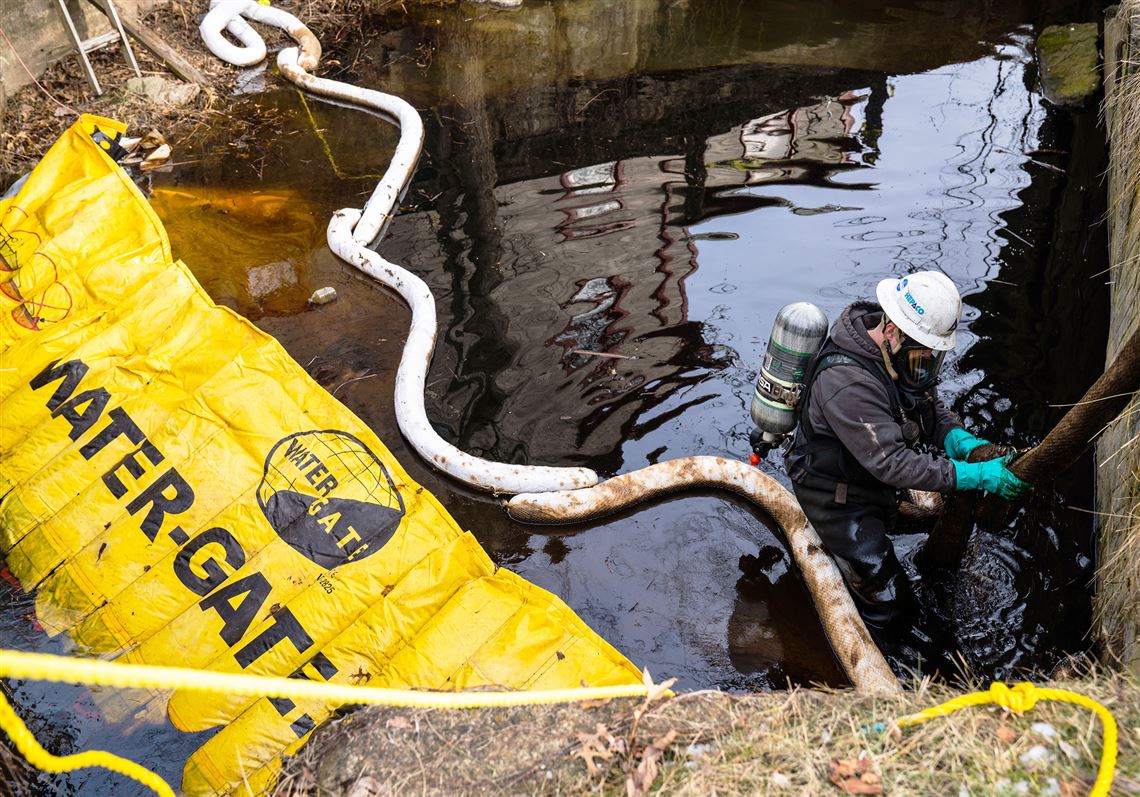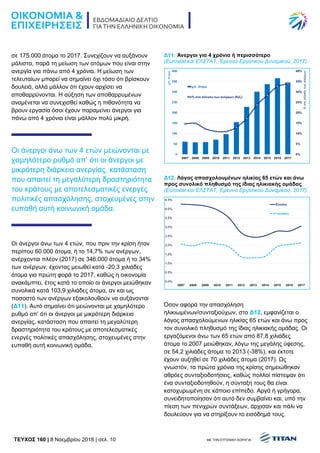Ohio Train Derailment: Long-Term Impact Of Toxic Chemical Contamination On Buildings

Table of Contents
Types of Chemical Contamination and Their Impact on Building Materials
The derailment released a cocktail of hazardous substances, with vinyl chloride and butyl acrylate being among the most concerning. Understanding their impact on building materials is crucial for assessing long-term risks.
Vinyl Chloride's Effects
Vinyl chloride, a known carcinogen, can severely damage various building materials. Its effects are insidious and can manifest over time.
- Examples of damage: Cracking and embrittlement of plastics, deterioration of rubber seals and gaskets, discoloration and peeling of paints.
- Degradation processes: Vinyl chloride can leach into porous materials, causing long-term structural weakening and compromising the building's integrity. This degradation can be gradual, making early detection challenging.
- Detection methods: Specialized testing is needed to detect vinyl chloride residue, including air sampling, material analysis (e.g., gas chromatography-mass spectrometry), and visual inspection for signs of damage. Accurate detection requires professional environmental testing services.
Butyl Acrylate and Other Chemicals
Butyl acrylate, another released chemical, presents its own set of challenges. Its specific effects depend on its concentration and interaction with other chemicals.
- Specific examples of damage: Butyl acrylate can affect paints, coatings, and some plastics, potentially leading to discoloration, softening, or even structural failure.
- Materials affected: Porous materials like wood and concrete can absorb butyl acrylate, leading to long-term contamination.
- Synergistic effects: The combination of various chemicals released in the derailment may create synergistic effects, exacerbating the damage and posing greater health risks than individual chemicals alone. This necessitates comprehensive testing and analysis.
Assessing the Extent of Contamination
Accurately assessing the extent of contamination is crucial for effective remediation. This requires a multi-pronged approach.
- Different testing methodologies: Air quality testing identifies airborne contaminants, while material sampling assesses the level of contamination within building materials. Visual inspections can help identify visible signs of damage.
- Limitations of testing: The accuracy of testing depends on the method used, sampling location, and the expertise of the professionals conducting the tests.
- Comprehensive testing: A comprehensive assessment combining different testing methods is essential for a complete understanding of the contamination and its potential long-term consequences. This will inform the most effective remediation strategies.
Health Risks Associated with Long-Term Exposure to Contaminated Buildings
Long-term exposure to the chemicals released in the Ohio train derailment poses significant health risks to residents and workers in the affected area.
Respiratory Issues
Inhalation of contaminated air can lead to various respiratory problems.
- Specific health conditions: Asthma, bronchitis, and other respiratory illnesses can be exacerbated by exposure to vinyl chloride and other toxins.
- Symptoms: Coughing, shortness of breath, wheezing, and chest tightness are common symptoms.
- Preventative measures and treatment: Air purifiers, respiratory protection, and prompt medical attention are crucial for managing respiratory issues.
Cancer Risks
Several chemicals released in the derailment are known carcinogens.
- Specific chemicals and their carcinogenic properties: Vinyl chloride is a known human carcinogen, linked to various cancers, including liver cancer. Long-term exposure significantly increases cancer risk.
- Long-term health risks: The long latency period between exposure and cancer development necessitates long-term health monitoring.
- Relevant research and studies: Numerous studies link vinyl chloride exposure to increased cancer incidence; access to these studies is crucial for understanding the long-term health impacts.
Other Health Concerns
Exposure to contaminated buildings can lead to a range of other health problems.
- Neurological effects: Some chemicals can affect the nervous system, leading to neurological symptoms.
- Reproductive issues: Certain chemicals can impair reproductive health.
- Other possible health complications: Long-term exposure may result in other health complications, underscoring the need for comprehensive health monitoring and medical attention. Minimizing exposure and seeking prompt medical evaluation are vital.
Remediation and Mitigation Strategies for Contaminated Buildings
Addressing the contamination requires a comprehensive remediation strategy.
Decontamination Procedures
Decontamination may involve various methods, each with its limitations.
- Different decontamination techniques: These can include air scrubbing, surface cleaning, and in some cases, complete removal and replacement of contaminated materials.
- Effectiveness and limitations: The effectiveness of decontamination depends on the type and extent of contamination, and some contaminants may be difficult or impossible to completely remove.
- Complexities and costs: Remediation is often complex, time-consuming, and expensive.
Structural Repairs and Replacement
Damaged building materials may require repair or replacement.
- Assessment of structural integrity: Thorough structural assessments are crucial to determine the extent of damage and the need for repairs or replacement.
- Cost-effective repair strategies: Repairs should be cost-effective while ensuring the safety and long-term integrity of the building.
- Potential demolition: In severe cases, demolition may be necessary to prevent further health risks. Insurance claims and legal considerations will significantly factor into these decisions.
Long-Term Monitoring and Safety Protocols
Ongoing monitoring and safety protocols are essential for long-term protection.
- Regular air quality testing: Regular testing helps identify any lingering contamination and ensures the safety of occupants.
- Safety protocols for residents and workers: Clear safety protocols should be in place to minimize exposure during remediation and ongoing occupancy.
- Long-term health surveillance: Long-term health monitoring programs should be implemented to track potential health effects in the affected population. Open communication and community engagement are essential for success.
Conclusion
The Ohio train derailment's long-term impact on buildings extends beyond immediate visible damage. The lingering effects of toxic chemical contamination pose significant risks to both structural integrity and human health. Thorough testing, comprehensive remediation, and continuous monitoring are crucial to mitigating these risks. Understanding the potential dangers and taking proactive steps are essential for ensuring the safety and well-being of those affected by the Ohio Train Derailment. For further information on building safety and the ongoing impact of the derailment, consult with environmental health specialists and local authorities. Don't underestimate the long-term consequences of the Ohio Train Derailment; proactive action is vital.

Featured Posts
-
 Analyzing The Appeal Of Androids New Design To Gen Z
May 09, 2025
Analyzing The Appeal Of Androids New Design To Gen Z
May 09, 2025 -
 Cite De La Gastronomie De Dijon Analyse Du Contexte De La Crise D Epicure
May 09, 2025
Cite De La Gastronomie De Dijon Analyse Du Contexte De La Crise D Epicure
May 09, 2025 -
 Watters Cheating Joke Sparks Outrage Hypocrisy Accusations Rock Fox News
May 09, 2025
Watters Cheating Joke Sparks Outrage Hypocrisy Accusations Rock Fox News
May 09, 2025 -
 Is 2025 The Year Of Stephen Kings Cinematic Triumphs Or Disasters A Look At The Monkey
May 09, 2025
Is 2025 The Year Of Stephen Kings Cinematic Triumphs Or Disasters A Look At The Monkey
May 09, 2025 -
 Klimatiki Allagi Kai Imalaia Ta Xionia Sto Xamilotero Epipedo Ton Teleytaion 23 Eton
May 09, 2025
Klimatiki Allagi Kai Imalaia Ta Xionia Sto Xamilotero Epipedo Ton Teleytaion 23 Eton
May 09, 2025
